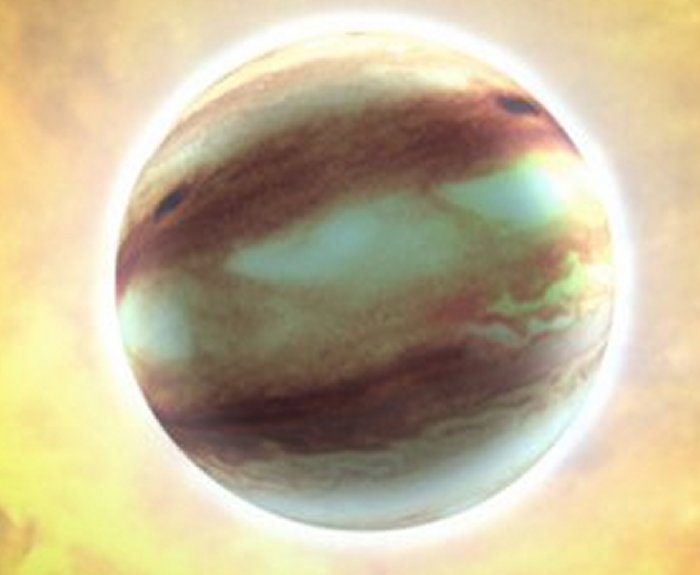MessageToEagle.com – The most detailed map of a small, rocky ‘super Earth’ to date has been created by an international team of astronomers, led by the University of Cambridge. It reveals a planet almost completely covered by lava, with a molten ‘hot’ side and solid ‘cool’ side.
Using data from NASA’s Spitzer Space Telescope, the researchers examined a planet known as 55 Cancri e, which orbits a sun-like star located 40 light years away in the Cancer constellation, and have mapped how conditions on the planet change throughout a complete orbit, the first time this has been accomplished for such a small planet.

The map is the most detailed ‘fingerprint’ of a rocky planet outside our solar system to date, and found a planet of two halves: one that is almost completely molten, and the other which is almost completely solid.
Conditions on the hot side of the planet are so extreme that it may have caused the atmosphere to evaporate, with the result that conditions on the two sides of the planet vary widely: temperatures on the hot side can reach 2500 degrees Celsius, while temperatures on the cool side are around 1100 degrees.
55 Cancri e – Most Exotic World We Can Only Imagine
Uncovering the characteristics of super Earths is difficult, since they are so small compared to the parent star and their contrast relative to the star is extremely small compared to larger, hotter gas giant planets, the so-called ‘hot Jupiters’.
“We haven’t yet found any other planet that is this small and orbits so close to its parent star, and is relatively close to us, so 55 Cancri e offers lots of possibilities,” Dr Brice-Olivier Demory of the University’s Cavendish Laboratory, said in a press release.
“We still don’t know exactly what this planet is made of – it’s still a riddle. These results are like adding another brick to the wall, but the exact nature of this planet is still not completely understood.”
55 Cancri e has been extensively studied since it was discovered in 2011. Based on readings taken at different points in time, it was thought to be a water world, or even made of diamond, but researchers now believe that it is almost completely covered by lava.
Based on these new infrared measurements, the ‘day’ side of the planet appears to be almost completely molten, while the ‘night’ side is almost completely solid. The heat from the day side is not efficiently circulated to the night side, however. On 55 Cancri e, the hot side stays hot, and the cold side stays cold.
“On the day side, the temperature is around 2500 degrees Celsius, while on the night side it’s about 1100 degrees – that’s a huge difference,” Demory said.
“We think that there could still be an atmosphere on the night side, but temperatures on the day side are so extreme that the atmosphere may have evaporated completely, meaning that heat is not being efficiently transferred, or transferred at all from the day side to the night side.”
What is unclear however, is where exactly the ‘extra’ heat on 55 Cancri e comes from in the first place, since the observations reveal an unknown source of heat that makes the planet hotter than expected solely from the irradiation from the star – but the researchers may have to wait until the next generation of space telescopes are launched to find out.
Paper: DOI: 10.1038/nature17169
MessageToEagle.com
Expand for referencesReferences:







